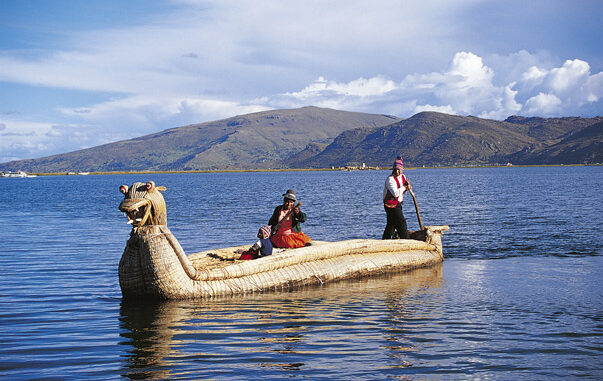

Digital Vision/age fotostock
A view of Lake Titicaca on the border of Peru and Bolivia
Lake Titicaca, at an elevation of 12,500 feet, is the world’s highest navigable lake. The lake’s shoreline is eccentric, with many bays and inlets. Part of the lake is in Bolivia, and the other is in Peru. There are many islands in the lake, the best known of which are Isla del sol (Island of the Sun) and Isla de la luna (Island of the Moon).
According to the ancient Incas, the sun god Inti felt sorry for humankind when he saw people living in a primitive state. He therefore sent his own two children, Manco Capac and Mama Occlo, to Earth to teach people the arts of civilization. According to one legend, the two landed on an island in Lake Titicaca. According to another version, they sprang from the waters of the lake.
Manco Capac became the first emperor of the Incas and he and Mama Occlo married. Inti gave Manco Capac and Mama Occlo a long, golden staff. He told them the staff would lead them to the perfect location to found their capital city—the place where the staff would easily sink into the ground. This place was Cusco. Here it is said that they brought civilization to the indigenous people and converted them to the religion of the sun. The Incas believed they were the direct descendants of the children of god, and therefore, believed they had the right to conquer and to rule others.
Explore More:
Choose one topic about Lake Titicaca to explore more, such as the Aymaras, the Quechuas, the islands, the lake’s physical properties, its wildlife, or activities for visitors. Try to use Spanish-language Web sites for your investigation. Then give a report to your class in Spanish that summarizes what you learned. You may wish to create a slideshow to accompany your presentation.